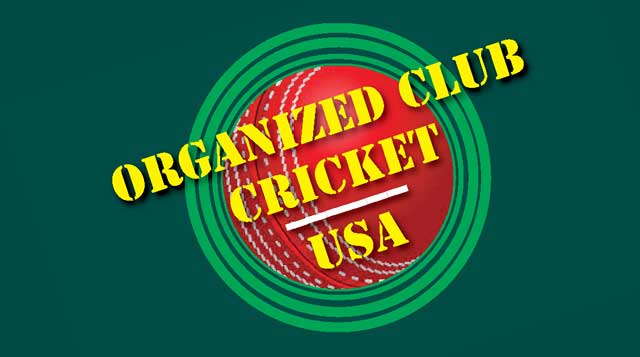
By John L. Aaron
Club cricket is exciting! Club cricket is competitive! Club cricket is unifying! Club cricket builds camaraderie! Great, but is that where club cricket and the culture of club cricket in the USA ends? Surely, there must be more to club cricket than simply showing up, playing, and participating in the post-match celebration if you’re on the winning side of the encounter, or heading home to families, and the next day to work, and repeating the feat or defeat all over again the next weekend.
In a previous article I sought to define the difference between teams and clubs, and suggested that an organized club was a step up from an ad hoc team, and an organized league was a step up from an organized club. Organized club cricket is akin to organized league cricket and by extension the basis for good governance an organized management at the national level.
Curating the principles of democracy, inclusion, and good governance at the local club level will ultimately produce better leaders of the sport at the national level and beyond. If a player is accustomed to playing only T20 cricket, he/she will have difficulty adjusting to 50-overs cricket. If a player is not accustomed to wearing the twelfth man’s vest in cricket at the local level, he would feel uncomfortable wearing one on the national stage. The point is, curating of a cricket culture within an organizational structure at the local level, is very important to the development of engaged cricketers and administrators who look to give back something to the sport that brought them so much joy.
In the interest of the sport growing its base in the United States, its intellectual capital must also grow as a part of the curating process. The best place to encourage such growth is at the organized club level. A club with democratic elections, project planning exercises, membership recruitment drives, debates, integrity, compromise and teamwork, is one that is most likely to produce the next generation of savvy and engaged administrators.
For the longest while cricket in the USA has been starved for quintessential leadership in the quantities necessary to help the sport grow at the national level, while engaging the masses of players and administrators at the local levels. That dilemma created an ever-widening chasm and disengagement between players, clubs and leagues at the local level, and administrators at the national level; resulting in enormous apathy and poor governance.
The lack of interest on the part of players simply content on remaining “weekend warriors” and administrators intent on governing remotely from the mountain-top, created a disconnect between the national leadership and other stakeholders, and that did not serve in the best interest of the majority of cricketers. Thus stealing the rights players never knew they had – the right to a pathway to better cricket and national representation opportunities for all.
Cricket in the USA cannot afford to slip back to that era of non-involvement by the players, divisiveness, and wide-spread apathy. Those are the fertilizers that help create discord that only benefits those unwilling to exercise good governance. The lack of integrity at the top is aided and abetted by the lack of engagement at the local levels.
Learning the rudiments of good governance and representation is best cultivated within the club structure, because that’s where our next generation of league and national leaders will emerge. The development and encouragement of leaders from within the club structure will also help narrow the gap of apathy between a national governing body and local stakeholders and players; simply because they are more likely to remain engaged and participate more fully in issues and democratic processes that help shape the national conversation and destiny of the sport.
The leaders of national cricket in the USA must ultimately be drawn from those who have experienced leadership at the local club and league levels. For too long we have experienced an injurious spate of apathy, as players just wanted to play cricket uninterrupted, enjoy common experiences, the support of their peers, families and friends, and caring not; who governed the sport from within that distant group called a national governing body. That mind-set contributed significantly to the stagnancy of cricket in the USA, as more than possibly 95% of active players were recreational cricketers, had no interest in representing the USA, did not see themselves as national cricket material, and more importantly saw no clear pathway to becoming a USA national cricketer. That pathway was not managed in the best interest of all, given the existence of such apathy.
Enthusiastic young cricketers now see a clear pathway to representing the USA on the international stage and beyond, with the possibility of cricket as a career choice. That the apathy has dwindled somewhat is a great thing for cricket in the USA. However, the sustainable next crop of national representatives will undoubtedly come from among those who have had a chance to serve in democratically led clubs, and have helped curate cricket leadership at the grassroots level, while acquiring the skills set to understand the nuances of administration at the national level, and what it takes to sustain and serve the sport, in the best interest of the majority.
Organized club cricket and the opportunity and platform it provides, are the keys to curating an intellectually savvy crop of cricket leaders and administrators willing to serve at the national level.
If as a player you are not part of a club, encourage those on your team to start a club, seek help in establishing a club structure, with a constitution, democratic principles, ideals, transparency, accountability, reliability, and the development of leadership skills parallel to cricket skills; and you will control the future of the sport in the USA. If the majority of cricketers and stakeholders advocate democracy, transparency and integrity at the organized club level, cricket in the USA will forever be on the right path.
Not every one of us can control the wave of a willow or find the boundary with minimum wrist guidance like Virat Kohli, nor flight a 5.5 ounce red spherically shaped object like Ravichandran Ashwin. However, that does not mean that the less talented mortals among us cannot make a contribution to the sport off the field. Just as cricketers are coached for several years to ultimately become elite players, administrators need coaching and exposure to become “elite” administrators, having curated their experiences along the way.
Such leadership skills are honed along the way, not unlike a batsman or bowler who hones his/her skills on the way to becoming an elite player. Cricket has to develop leaders on and off the field of play with a similar passion, if not who will lead the cricketers at the national governing level?
Organized club cricket is an excellent incubator for integrity, democracy, and so many other qualities of astute leadership.
